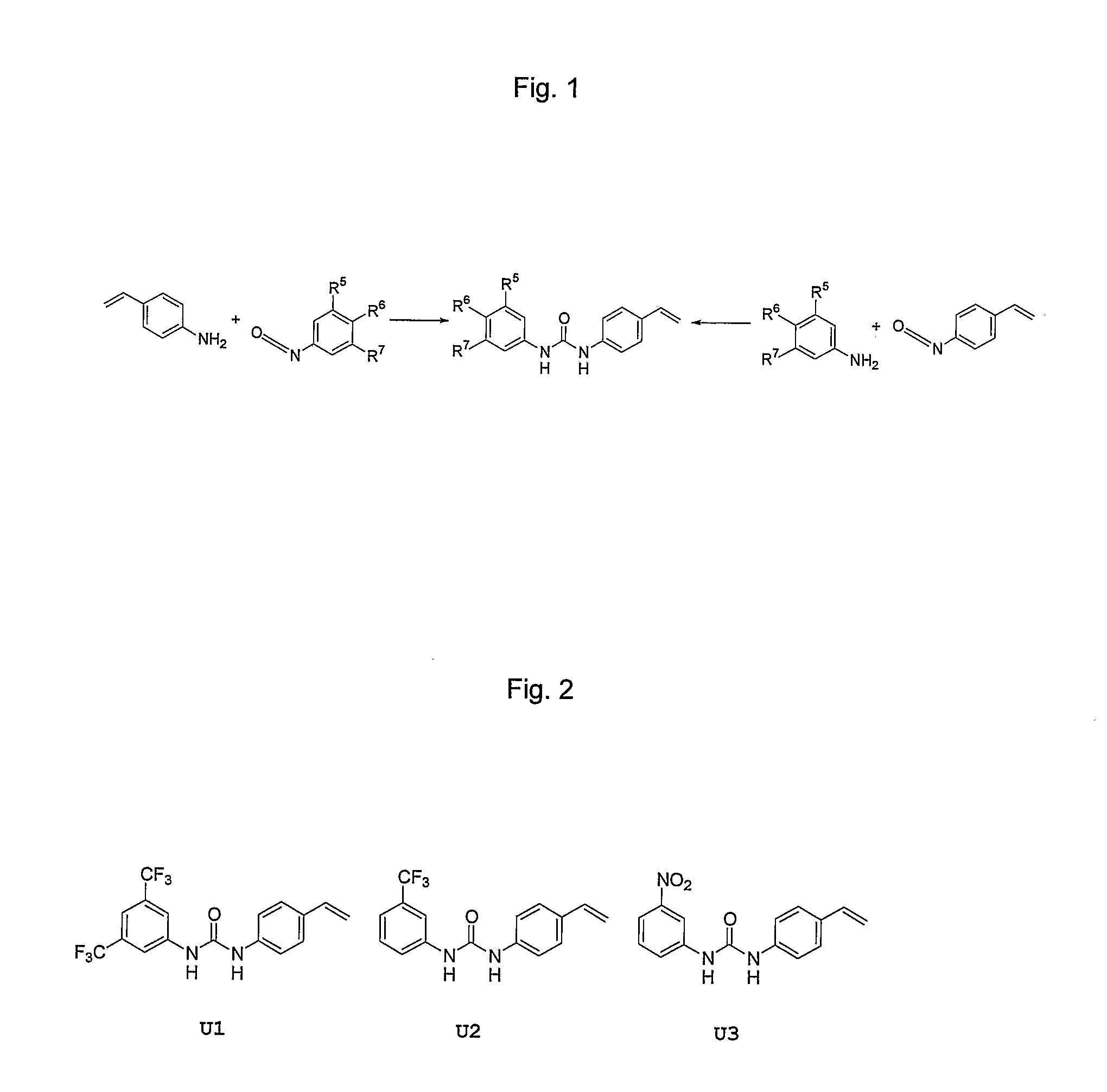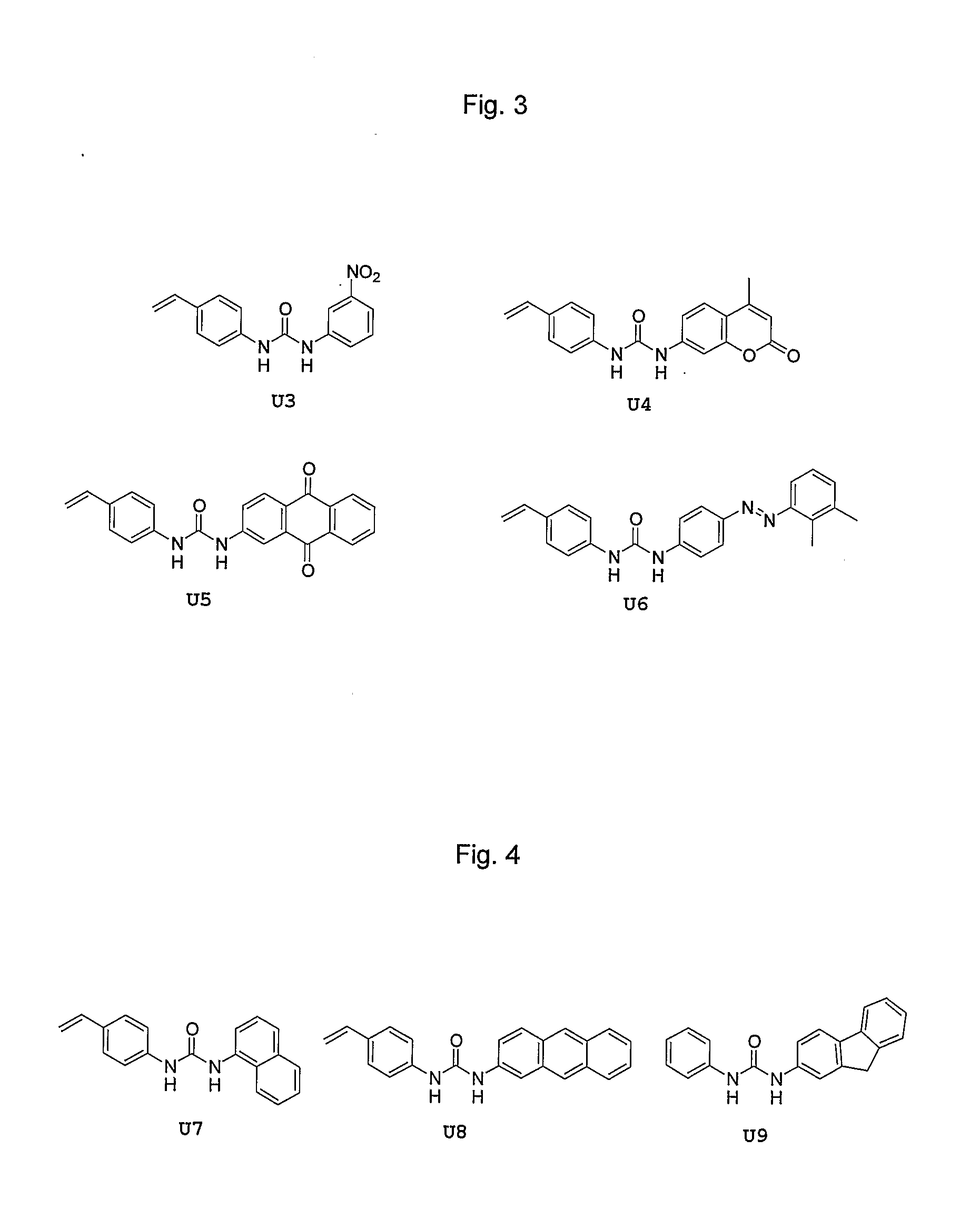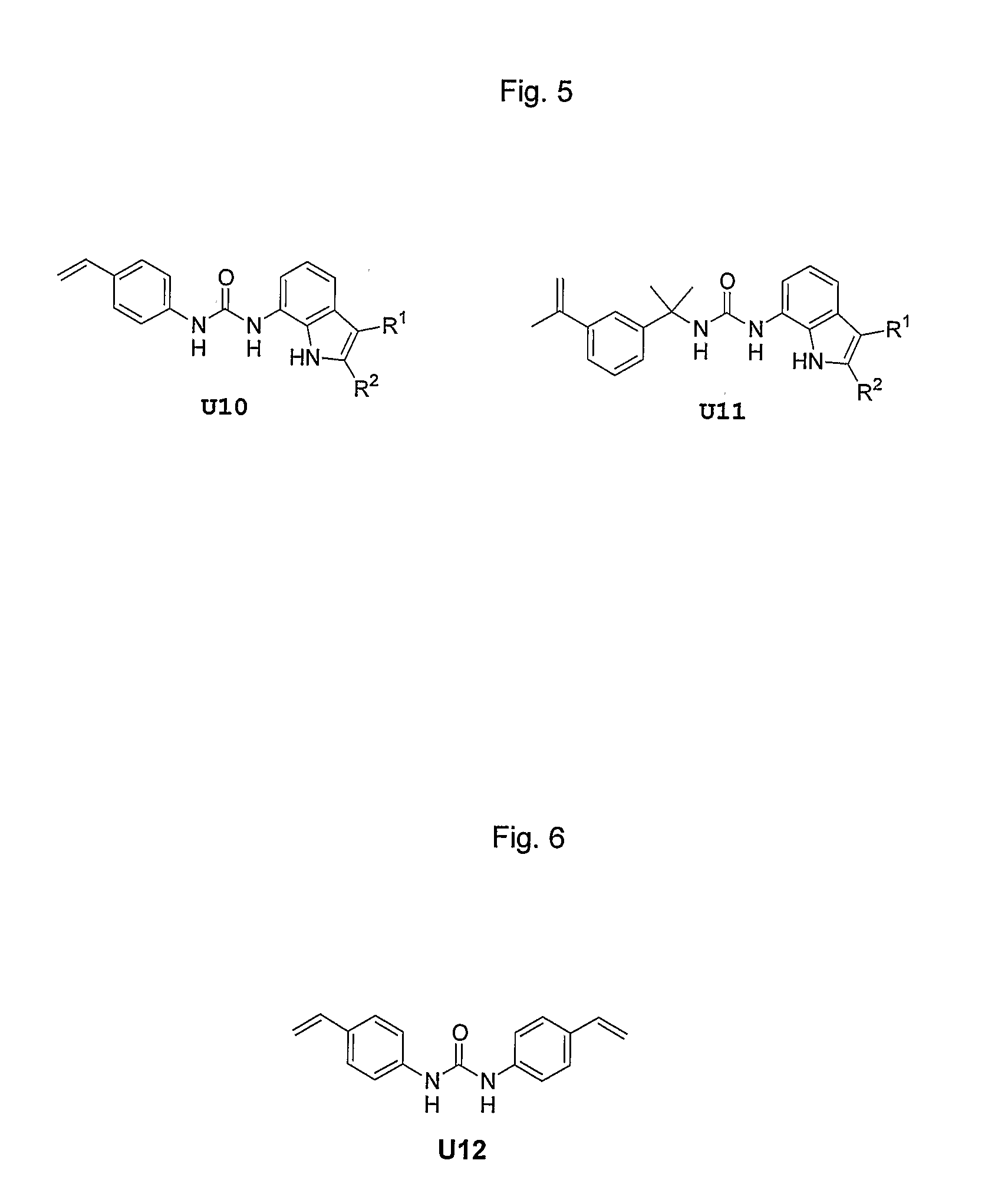Method for Producing Molecularly Imprinted Polymers for the Recognition of Target Molecules
a technology of target molecules and imprints, which is applied in the direction of instruments, biological material analysis, material analysis, etc., can solve the problems of increasing the cost of training dogs, increasing the cost of training, and taking many years to achieve the effect of reducing the cost of training
- Summary
- Abstract
- Description
- Claims
- Application Information
AI Technical Summary
Problems solved by technology
Method used
Image
Examples
example 1
Synthesis of Strong-Binding Urea Functional Monomers
[0090] These monomers are prepared in good to excellent yield in one step, either from a polymerisable aniline and a non-polymerisable phenyl isocyanate or vice versa (see FIG. 1) (Hall et al., J. Org. Chem. 2005, 70, 1732-1736). The polymerisable isocyanate shown may be prepared in good yield from 4-toluic acid in four synthetic steps. (Lübke et al., J. Am. Chem. Soc. 1998, 120, 13342-13348)
[0091] In the simplest case, R5═R6═R7═H, i.e. 1-(4-vinylphenyl)-3-phenyl urea. The Lewis acidity of the urea functional monomer may be tuned by variation of the nature of the substituents R5, R6 and R7. Thus, when these substituents are electron-donating groups, e.g. methyl, methoxy, amino, etc., the Lewis acidity and, hence, the hydrogen bonding ability of the functional monomers, is reduced in comparison to the parent compound U1. Conversely, when substituents R5, R6 and R7 are electron-withdrawing groups, e.g. halide, nitro-, trifluorometh...
example 2
Synthesis of Chromogenic Urea Functional Monomers
[0093] These monomers are prepared in good to excellent yield in one step, either from a polymerisable aniline and a non-polymerisable phenyl isocyanate or vice versa. On binding with the template molecule or the target analyte, a detectable change in the colorimetric properties of the monomer units are observed, both when the monomers are in solution and when incorporated into an imprinted polymer matrix. This leads the way towards imprinted polymer colorimetric sensors. Some non-limiting examples, U3, U4, U5 and U6 are shown in FIG. 3.
example 3
Synthesis of Fluorogenic Urea Functional Monomers
[0094] These monomers are prepared in good to excellent yield in one step, either from a polymerisable aniline and a non-polymerisable phenyl isocyanate or vice versa. On binding with the template molecule or the target analyte, a detectable change in the fluorimetric properties of the monomer units are observed, both when the monomers are in solution and when incorporated into an imprinted polymer matrix. This leads the way towards imprinted polymer fluorimetric sensors. Some non-limiting examples, U7, U8 and U9, are shown in FIG. 8.
[0095] In addition to the above fluorogenic mono-ureas, we also include the novel indole-containing mono-ureas. These monomers are formed in two steps, from an appropriate 7-nitroindole, in moderate to good overall yield. The acidic indole NH proton is properly positioned such that a third hydrogen bond to template and analyte molecules is possible. Thus, in addition to the fluorescence activity of the ...
PUM
| Property | Measurement | Unit |
|---|---|---|
| Electronic structure | aaaaa | aaaaa |
Abstract
Description
Claims
Application Information
 Login to View More
Login to View More - R&D
- Intellectual Property
- Life Sciences
- Materials
- Tech Scout
- Unparalleled Data Quality
- Higher Quality Content
- 60% Fewer Hallucinations
Browse by: Latest US Patents, China's latest patents, Technical Efficacy Thesaurus, Application Domain, Technology Topic, Popular Technical Reports.
© 2025 PatSnap. All rights reserved.Legal|Privacy policy|Modern Slavery Act Transparency Statement|Sitemap|About US| Contact US: help@patsnap.com



